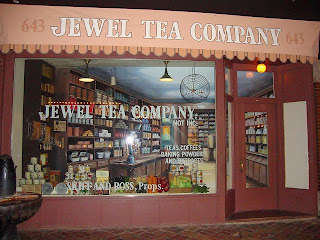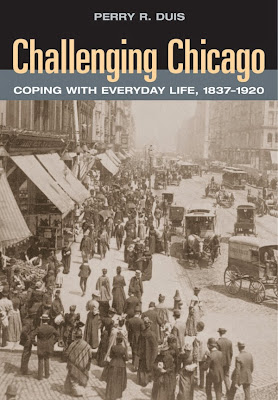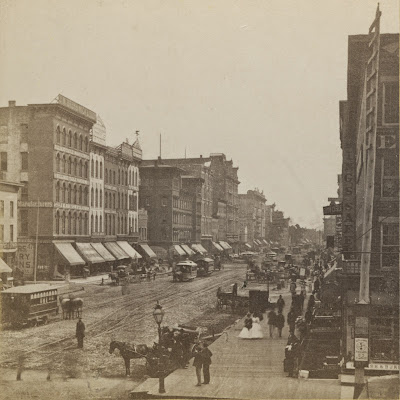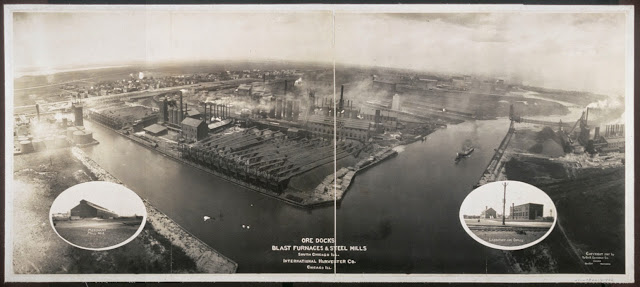As my readers know, I am interested in the
lives of my Irish ancestors who came to Chicago, IL in the mid-nineteenth
century. Because they were part of the new urban poor (a group made up of rural
people from America and abroad who came to the cities seeking jobs),
I began
researching what life was like for those who lived on the margins without
secure employment. In my post of November 12, 2014, I wrote about
some of the challenges the poor faced in nineteenth century Chicago. This led
me to wonder more about the causes of poverty in America and how this society responded
to the needs of those without the means to take care of themselves.
 |
| From the old to the new world - German emigrants for New York embarking on a Hamburg steamer, 1874, LC-USZ62-100310, Library of Congress Online Catalog. |
 |
Walter I.
Trattner, From poor law to welfare state:
a history of social welfare in America
(New York, N.Y. : The Free
Press, Simon and
Schuster, 1999)
|
I used two books to anchor my exploration into
this topic. First, I went to Walter I. Trattner’s book From Poor Law to Welfare State: A History of Social Welfare in America first published in 1974 and now in its sixth
edition. Trattner begins his coverage of the response to poverty by society with
colonial America and goes up to President Bill Clinton’s overhaul of the
welfare system. In addition to his comprehensive information on the causes and
responses to poverty in America, Dr. Trattner also provides an in-depth
bibliography after each chapter.
 |
| Pauperization: cause
and cure, Sir Baldwyn Leighton, 1871, Internet Archive, Wikimedia. |
We learn from Dr. Trattner that the social system for helping the poor in colonial America was based on the English Poor Law of 1601. (p. 10-12, 16, Trattner.) This law, in England and similar ones in America in the mid-1600s, allowed towns to levy a tax on householders that was used to provide some relief to the impoverished. Churches also contributed to helping the poor in their parishes. If you were poor in eighteenth century America, you fared better than those who followed you in the next century:
“…the problem of poverty had been defined and
the lines of attack against it were marked out. In many areas, selectmen,
county justices, overseers of the poor, constables, church wardens, or whoever
the authority happened to be, made regular surveys of their areas to determine
the condition of the population and to call attention to those who needed
assistance….By and large, the poor—at least the white poor—were dealt with
humanely and often wisely…especially when compared to later developments.” (p.
27, Trattner.)
The second book Poverty in America by
Catherine Reef is a great reference. It is a textbook, but
don’t let that put you off. Not only is the text accessible, it is engrossing,
and the book has two very helpful tools at the end of each chapter. First,
there is a timeline or “Chronicle of Events” for the period covered in the
chapter which lists major happenings and trends, including laws enacted,
epidemics, population figures, employment data and different public and private
responses to poverty.
Here is an excerpt from the “Chronicle of Events” at the end of Chapter Two “Industrialization, Immigration, and Urban Poverty 1790-1864:”
“1793
An epidemic of yellow fever devastates
Philadelphia; the city provides emergency relief to 1,200 households each week.
1800
The population of New York City is 60,515.
Approximately 60,000 people live in the
Philadelphia area.
1810
The population of New York City reaches
96,373.
1812
War with England reduces foreign trade;
domestic manufacturing expands.
1815
The resumption of peace results in an influx
of imported goods and domestic wage cuts and layoffs.
New York State spends $245,000 on poor relief.
1819
The United States enters an economic
depression known as the Panic of 1819; 500,000 workers are unemployed.” (p.
31-32 Reef.)
If you look carefully at the timeline above,
you will notice that external events like epidemics, wars, and trade imbalances
have a great effect on the economic well-being of people.
 |
WITNESS logo
originally designed
in 1996, Chiat\Day, flickr.com
|
The second end-of-chapter tool is the
“Eyewitness Testimony.” This section is composed of quotations from public
officials, reporters and editors of newspapers, ministers, staff of
almshouses/poorhouses, and people who worked directly with the poor. I found
this section particularly moving and sometimes alarming. It is in this
testimony that you see two very different philosophies of what causes poverty
and how to deal with it. Before taking a look at some of this personal
testimony, let’s look at the genesis of these philosophies.
One attitude toward the poor has its roots
2,000 years B.C., became embedded in the sacred texts of the major religions of
the world, and continues to a large extent today. (p. 1-2 Trattner) This
attitude is that the poor are in their unfortunate position as a result of
outside events (such as poor health, unemployment, disability etc.) and deserve
to be helped by those with more means in the form of government aid.
But this
charitable philosophy, which flourished in America from colonial times through
the mid-eighteenth century, was to have a competing belief that was born from
many factors, including: the continuing flow of impoverished immigrants,
concentration of the poor in cities which drained public resources, and the
feeling on the part of many who had “made it” that only those who were lazy and
didn’t take advantage of all the opportunities America offered fell into
poverty. (p. 53, Trattner.)
 |
Yard of
tenement, New York, N.Y., Detroit
Publishing Co. ,
between 1900 and 1910, LC-DIG-det-4a18585,
Library of Congress Online Catalog.
|
Now, let’s look at some personal testimonials
from Reef’s book that illustrate the opposing philosophies of poverty. These
are from “Eyewitness Testimony” at the end of Chapter Two “Industrialization,
Immigration, and Urban Poverty 1790-1864:”
This witness, Rev.Ward Stafford, although a man of the cloth, believed that since the poor bore much responsibility
for their circumstances:
“…many
charitable institutions, or institutions for affording pecuniary or other
equivalent aid to the indigent, exert, on the whole, an unhappy influence on
society. Is it not true, that, by these institutions…provision is in fact made
for idleness and other vices? If people believe, that they shall be relieved
when in distress, they will not generally make exertions, will not labour when
they are able and have the opportunity.” Ward Stafford, missionary to the poor
of New York City, March 1817, New Missionary
Field, p. 43. (p. 35 Reef.)
For the other side of the debate on the poor,
we have this testimony from yet another minister:
“[T]he paupers
and the beggars do not constitute the
sum total of the POOR. Would to God they did. The great mass of the poor are
those who are struggling by toil, privation, and even in destitution, to get
bread and clothing for themselves and children, and a place to shelter them
from the cold and the storm, without
begging, or calling upon the public authorities for aid.” G.W. Quinby,
Universalist minister in Yarmouth, Maine, 1856, The Gallows, the Prison, and
the Poor-Houses, p. 295. (p. 45 Reef.)
Later in his testimony, Rev. Quinby describes
the horrid conditions that the poor lived under in major American cities in the
nineteenth century:
“…I see them living—suffering in garrets and
cellars—and pent-up rooms—with no ventilation; damp, filthy, destructive to
health and happiness. I see the widow and the orphan—and the honest poor man,
with a large family—weak and sickly himself from long and constant toil to
furnish bread and clothing for his dear ones.” (p. 45 Reef.)
These two opposing viewpoints towards the poor
that we have seen in those who worked directly with them can also be seen in
society at large during the early years of America. During the time that most
people lived in small villages, worked on farms and didn’t travel far, poverty
was manageable: the poor were your relatives or neighbors. Of course, you
helped them. But as the nineteenth century dawned, the Industrial Revolution
changed poverty. Cities were beacons to the rural poor from America and abroad
with their factories that promised jobs. But these jobs were tied to economic
conditions that ebbed and flowed.
Gradually through the nineteenth century, the
urban poor filled crowded tenements which became cesspools of disease. The
larger society began taking notice of these wretched conditions when it became
apparent that disease cannot be relegated to the poor. In “Eyewitness
Testimony” at the end of Chapter Two “Industrialization, Immigration, and Urban
Poverty 1790-1864,” we hear from Marcus T. Reynolds, an architect, who warned against ignoring the suffering of the poor in
The Housing of the poor in American Cities (1892) pp. 34-35:
“Of all the evils which are due to the
tenement-house system, the one that concerns the public most directly is the
danger…from the presence in the tenement district of contagious and infectious
diseases….The working people, who spend the night in such dirty and disease-breeding
places, disperse in the morning, and by the nature of their occupations, find
their way to all portions of the city, and are thrown in contact with all
classes of society.” (p. 99-100 Reef.)
 |
The tenement
- a menace to all, Udo J. Keppler, N.Y.,
J. Ottmann Lith. Co., Puck Bldg.,
1901 March
20, LC-DIG-ppmsca-25509,
Library of
Congress Online Catalog.
|
Dr. Trattner also notes that a motive of
nineteenth century charity was the need to protect the social order. He quotes
a member of the New York Association for Improving the Condition of the Poor, formed in 1843, who suggested that if
society does not help the poor:
(they will) “over-run the city as thieves and
beggars and endanger the security of property and life.” (records of the New
York Association for Improving the Condition of the Poor, formed in 1843, p.
69, Trattner.)
 |
From the depths, William Balfour Ker, c1906, LC-USZ62-45985, Library of Congress Online Catalog. |
We have thus seen the operation of two
different attitudes toward poverty in America from the 1600s through the 1800s.
The Industrial Revolution changed the onus of social welfare from a village
matter to a large urban concern. Public assistance to the poor mirrored the feeling of society at large.































